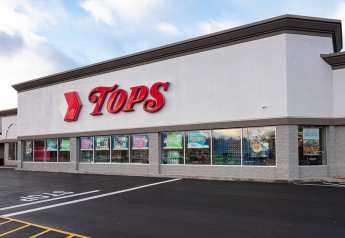Several varieties comprise easy-peeler category

Though they’re commonly referred to as “clementines,” the Chilean easy-peelers that turn up in supermarkets during the summer actually reflect a number of different citrus varieties, some that are and some that are not technically clementines.
“Clementines are commonly small in size, sweet, seedless and easy to peel,” said Matt Gordon, South American import team leader for DNE World Fruit Sales, Fort Pierce Fla., a division of Delano, Calif.-based Wonderful Citrus.
The phrase to use, suggests Peter Anderson, summer citrus commodity manager for Seald Sweet LLC, Vero Beach, Fla., is simply “easy-peelers,” since there are subtle differences between the early-season clementine varieties and the later murcotts.
“Chile’s climate being similar to California, as well as the latitude, enables them to grow easy-peelers similar to California and South Africa,” he said.
The Santiago-based Chilean Citrus Committee says there are nearly 5,500 acres of clementines planted in Chile.
Clemenules makes up 67% of the area planted with clementines, followed by orograndes (20%) and oronules (9%).
The clemenule is one of the most popular varieties of clementines, said Monserrat Valenzuela, manager of the citrus committee.
It’s a seedless mandarin with a smooth, easy-to-remove peel, rich orange color, and it’s soft, sweet and juicy, she said.
Orogrande originated in Murcia, Spain, in 1978 and is similar in size to clemenules. It is seedless, with a smooth peel, and it has a high percentage of juice.
The oronules is smaller than the clemenules.
A fairly new variety, the clemenluz, has been available for three years, Anderson said.
“It’s an early clementine bred for the central area of Chile that is a heavy producer,” he said.
It has good size and color characteristics that are geared for the U.S. market, and it comes on very early, similar to the oronules variety, he said.
He estimated that the industry exports about 1,000 metric tons annually.
Growers also are experimenting with test plantings of the orri variety, Gordon said.
Clemenules are the first citrus of the season, and they must be covered during the bloom period so that bees can’t pollinate the trees, said Howard Nager, vice president of business development for Sun Pacific Shippers Inc., Pasadena, Calif.
“This covering is what prevents seeds,” he said.
Other varieties, the w. murcott and the tango, a hybrid variety of the murcott, come on later.
The murcott is similar in many respects to clemenules, he said, but the tango has been bred to not produce any seeds.
“Most tangerines are self-pollinating,” Nager said. “But this does not stop bees from attempting to pollinate them, a process which results in the fruits developing seeds.”
The tango is a sterile fruit that rarely develops seeds, he said.
There’s no difference between the clementines that Fowler, Calif.-based Bee Sweet Citrus Inc. imports from Chile and those grown in California, said Monique Bienvenue, director of communications.
“Growers in the U.S. and Chile take great care in producing clementines that are of the highest quality,” she said.
Growing, picking and packaging methods mimic those in the U.S., she added.For the most part, the varieties grown in the U.S. and in Chile, are similar, agreed Tony Liberto, import citrus manager for Dayka & Hackett, Reedley, Calif., though he said California ships more tangos than Chile does.
“The growers in Chile have been focused on planting the correct varieties — the seedless, better-eating, easy-peel varieties — that compete with anything you would buy in California,” he said. “The older varieties that have seeds and have peels have been phased out,” he said.







